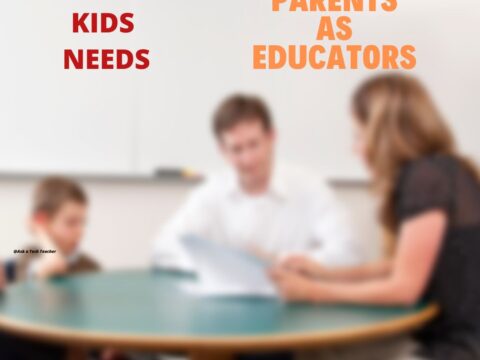 The norm in classrooms across the country used to be the teacher at the front lecturing, students taking notes which they then memorized for a summative test that decided their grade. Because the teacher was the expert, students learned at their feet, absorbing knowledge from the person who knew everything. In the early 1900’s, John Dewey suggested the education focus be switched to students when he introduced “learning by doing”, today referred to as Project-based Learning (PBL).
The norm in classrooms across the country used to be the teacher at the front lecturing, students taking notes which they then memorized for a summative test that decided their grade. Because the teacher was the expert, students learned at their feet, absorbing knowledge from the person who knew everything. In the early 1900’s, John Dewey suggested the education focus be switched to students when he introduced “learning by doing”, today referred to as Project-based Learning (PBL).
“All genuine learning comes through experience.” – John Dewey
This approach to learning has been successfully employed for more than one hundred years. Throughout modern history, PBL in the form of apprenticeships has been a valued and iconic approach to preparing children for adult jobs. Even before that, young chimpanzees learn to eat from termite mounds by mimicking what they see adults do — “learning by doing”.
What is PBL?
Project-based learning (PBL) asks teachers to act as facilitators, not lecturers, guiding students to find the necessary answers for the theme-related project they are completing. Students are no longer passive listeners who expect the teacher to have all the answers. In fact, students take charge of their own learning as they make choices about how to learn, plan how it should be done, solve their own problems, and present the results to fellow learners.
Here’s a great three-minute video from the Buck Institute for Education on what PBL is and how it works:
Here’s a science class’s hands-on experience with this approach to learning:
How does it work?
No matter the project, it must include clearly identifiable goals to be achieved and a roadmap of how students will accomplish them. The teacher starts with an introduction to the subject, including what students can expect to learn, but that’s where lecturing ends. Students are then broken into groups (or not; PBL can be done as individuals also) and they decide what type of project would best address the goals required by the teacher in the opening monologue. A good example of PBL is Genius Hour where students use their passion for a subject to learn more, hone research skills, engage in problem-solving, and then present their findings to classmates in hopes of inciting their interest. As students work, they learn to rely on themselves or their group. Teachers spend their time monitoring student progress and providing guidance to keep students on-target.
At first glance, a PBL class may seem chaotic as students follow a myriad of approaches to completing projects that address goals — but real learning is messy. Have faith that from chaos comes learning and the joy of unraveling complicated problems students thought they couldn’t. Don’t worry if as the teacher, you seem unhelpful or even wrong in your answers (especially if their topic is something they’ve researched in more depth than your knowledge). That’s part of learning-by-doing. When an expert who should know an answer (meaning the teacher) doesn’t, rather than giving up, students dig deeper.
Finish the project with class presentations. In this way, students organize their ideas and give classmates the opportunity to learn along with them. Encourage the audience to ask questions and the presenter to elaborate on a theme and provide evidence for their thoughts.
Pros
There are good reasons why more and more teachers turn to PBL to excite learning among their students:
- The essential components of PBL are critical thinking, collaboration, and communication. These are well-aligned with the environment students are most likely to be part of when they take a job.
- Students who actively create a project to support learning absorb the knowledge more deeply and remember it longer.
- PBL adapts well to differentiated needs as it is students who come up with the project that will guide them in learning a topic. Students can use videos, audio recordings, news articles, art, plays, or any other applicable material, allowing the student to pick what works best for their learning and communication style.
- Students are engaged as they mastermind the solution to problems and the answers to questions. This instinctively is what humans like to do.
- As students learn how to answer questions and solve problems on their own, they develop a skill that is transferable to many other parts of life.
Cons
But there are reasons why PBL isn’t right for every class:
- Becoming active consumers of knowledge may be difficult if students are used to sitting back and following the teacher’s lead.
- Knowledge gained from PBL may not transfer well to standardized tests where fact-based knowledge is valued more than hands-on. Teachers must be aware of that and know how to fill those holes.
- Teacher training in this learning approach is important. Teachers must become comfortable enough to step back and give the lead to students. Yes, teachers supervise and guide, but they don’t make the decisions. That’s up to students. It is a challenge for some teachers to step back when students make a mistake, letting them figure out where they went wrong and what to do about it.
- Assessing PBL projects isn’t well-suited to a standardized grading scale or rubric. That process can become subjective and difficult to justify if the teacher isn’t careful.
Overall, PBL is a popular and growing alternative to traditional teaching. It may be exactly the right choice for your unique student group.
Jacqui Murray has been teaching K-8 technology for 20 years. She is the editor/author of over a hundred tech ed resources including a K-8 technology curriculum, K-8 keyboard curriculum, K-8 Digital Citizenship curriculum. She is an adjunct professor in tech ed, CSG Master Teacher, webmaster for four blogs, an Amazon Vine Voice reviewer, CAEP reviewer, CSTA presentation reviewer, freelance journalist on tech ed topics, and a weekly contributor to TeachHUB. You can find her resources at Structured Learning. Read Jacqui’s tech thriller series, To Hunt a Sub and Twenty-four Days



































